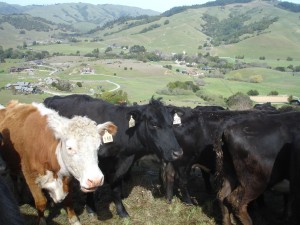
Rangelands represent one of the largest land-use footprints in the world and hold significant potential for employing soil carbon sequestration strategies to help mitigate climate change. California rangelands exhibit a wide range in soil carbon pool sizes. Theses differences are not correlated strongly with precipitation or soil type, indicating that management may play an important role in soil carbon storage or loss. To further explore the relationship between rangeland management and carbon storage, we have established large-scale field manipulations at two working grassland ecosystems: (1) the UC Sierra Foothills Research and Extension Center and (2) the Nicasio Native Grass Ranch. Specifically, we are looking at the short- and long-term effects of organic amendments and subsoiling on soil respiration, net primary productivity, soil carbon fractions, and extracellular enzyme activities. This work is part of a multi-stakeholder collaborative effort to assess the potential for soil carbon sequestration, called the Marin Carbon Project. For more information, see www.marincarbonproject.org

Publications
Silver, W.L., Ryals, R.A., and Eviner, V. Regional patterns in soil carbon pools in California’s annual grassland ecosystems. Journal of Rangeland Management.